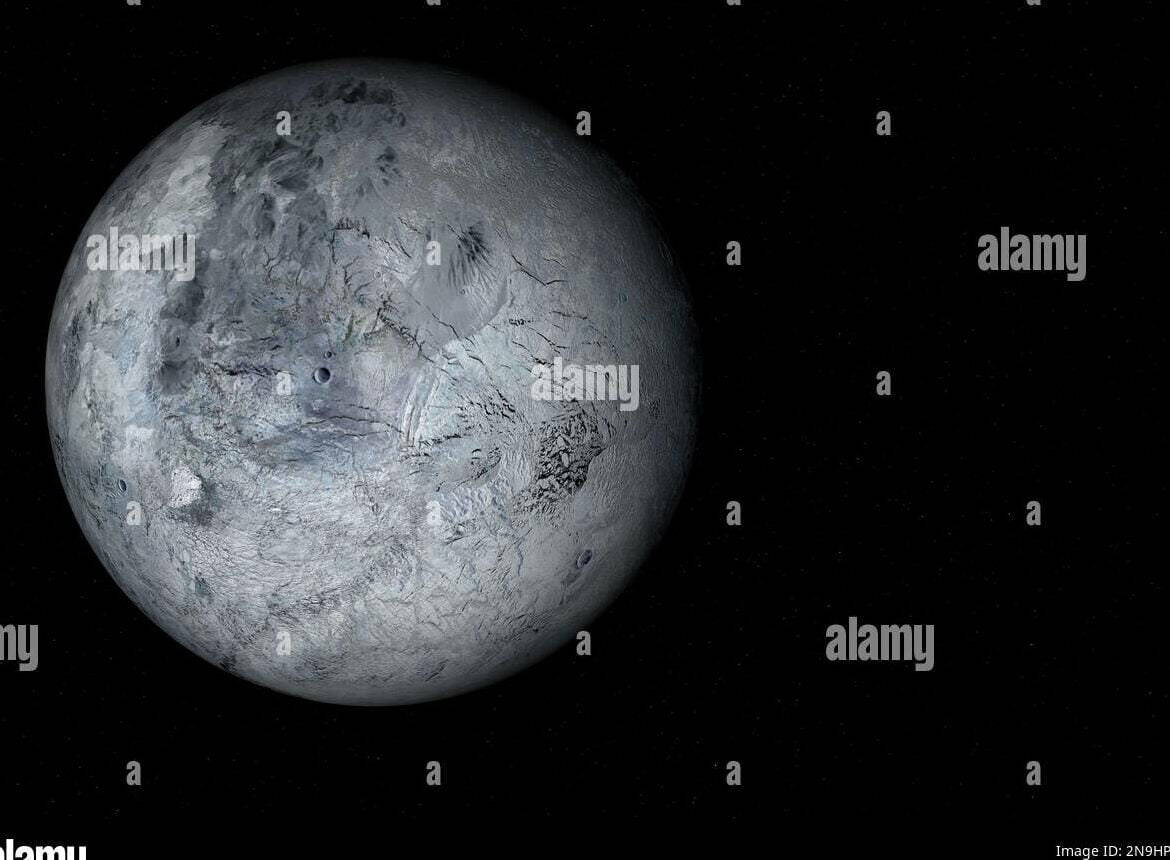The Erida (Eris) is a dwarf planet that is located beyond the orbit of Neptune. It was discovered in 2005 by a team of astronomers led by Michael Brown. Initially, it was thought to be a full-fledged planet similar to Pluto. However, the similarity between Erida and Pluto eventually led to the reclassification of Pluto as a dwarf planet, clarifying the definition of a “planet” and introducing the concept of a dwarf planet.
The planet Erida: its name and how it was found
Erida has emerged as the second most massive dwarf planet in our Solar System. Interestingly, when it was first detected, it was believed to surpass the size of Pluto. While the announcement of its discovery was made in 2005, the actual identification of Erida occurred back in 2003. However, the analysis of the captured images consumed a considerable amount of time.
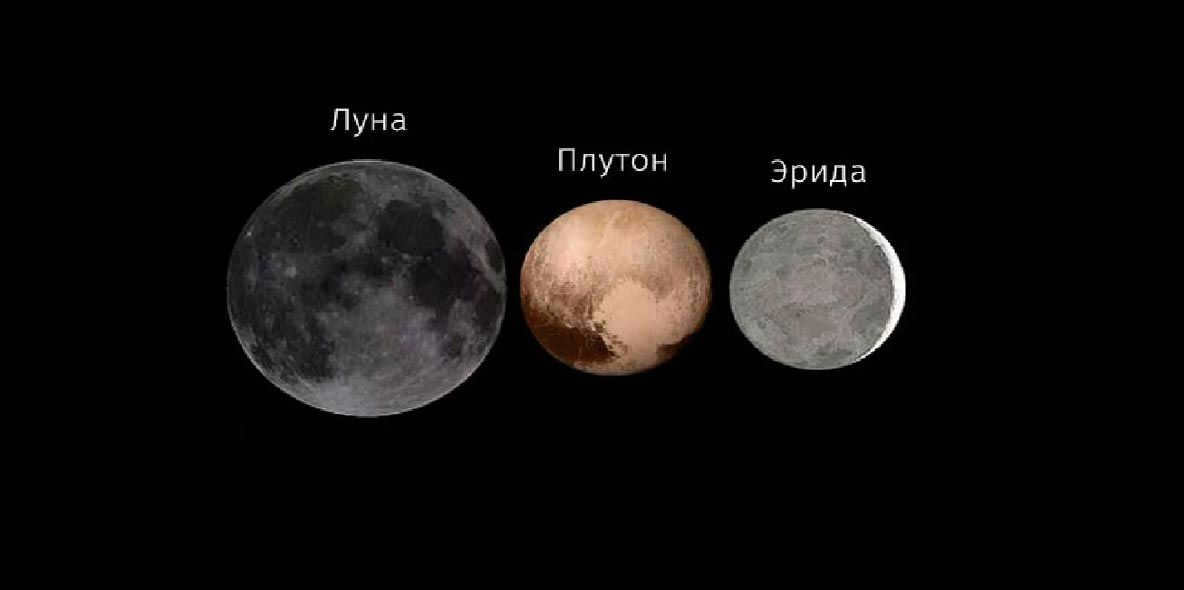
Comparison of the dimensions of Erida, Pluto, and the Moon
Erida was initially referred to as “Xena,” a temporary name inspired by the warrior queen in the popular TV series of the past. Rumors suggest that the name “Xena” was chosen because the letter “X” symbolizes the number “10” in Roman tradition, which aligns with the idea of a potential tenth planet. However, since the designation “Xena” was later revoked due to its classification as a full-fledged planet, it had to be renamed according to the tradition of assigning names of gods from Greek or Roman mythology to the classical planets in the solar system.
Perhaps the name Erida was not given by chance – it is known that the mythical Erida was the goddess associated with conflicts and disagreements. The dispute surrounding the status of Pluto and similar celestial bodies, and their reclassification as dwarf planets, marked the beginning of the story of Erida’s discovery.
Size and Distance of the Dwarf Planet Erida
Erida is classified as a transneptunian object, meaning it is a dwarf planet located beyond Neptune’s orbit. However, it is important to note that Erida is positioned at the same distance from Neptune’s orbit as Neptune is from the Sun. Being one of the objects found in the Kuiper Belt, Erida is believed to have originated during the early stages of the Solar System, approximately 4.5 billion years ago.
Erida is positioned approximately 68 astronomical units away from the Sun and about 95 astronomical units away from Earth. This vast distance translates to a staggering 13-hour journey for light to reach this dwarf planet. Erida measures around 1163 kilometers in radius (with a diameter of 2326 km), accounting for approximately 1/5 of Earth’s radius. In comparison to our Moon, Erida is slightly smaller, much like Pluto.
Although Erida is slightly smaller in size than Pluto, it boasts approximately 27% more mass and density. Consequently, Erida ranks as the tenth largest celestial body in the solar system in terms of size, but ninth when considering mass.
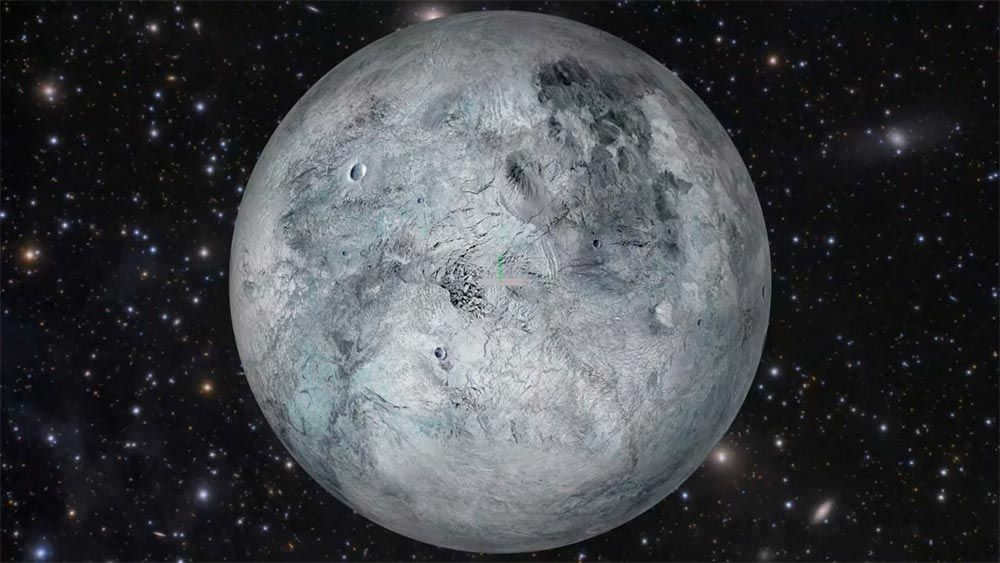

The exact characteristics of the surface of the dwarf planet Erida are unknown, but it is likely to share similarities with the surface of Pluto.
Earlier, I mentioned the considerable distance between Earth and Erida, and this is because Erida follows a lengthy orbit around the Sun. It takes approximately 558 Earth years for Erida to complete one full revolution around its elliptical path. As a result, the distance between the two objects, although subject to slight fluctuations, changes at an extremely slow rate. Erida completes one orbit around the Sun in approximately 25.9 hours.
Erida’s orbit has an intriguing feature, not only in its shape, but also in its inclination to the ecliptic plane. With an inclination of 44 degrees, Erida orbits the Sun at a “diagonal” angle compared to the other planets.
Characteristics of the dwarf planet Erida
Erida has an estimated surface albedo (reflectivity) of 0.96, which is higher than any other large celestial body in the Solar System, except for Enceladus, the sixth largest moon of Saturn. This high albedo is believed to be due to the presence of ice covering the surface of the dwarf planet.
Due to its density of 2.52±0.07 g/cm3, Erid is believed to be primarily made up of rocky substances. Based on its density and size, it can be inferred that Erida is not a completely frozen rock with ice, but it is likely to have a liquid water ocean at the boundary between the mantle and core as a result of radioactive decay in its interior.
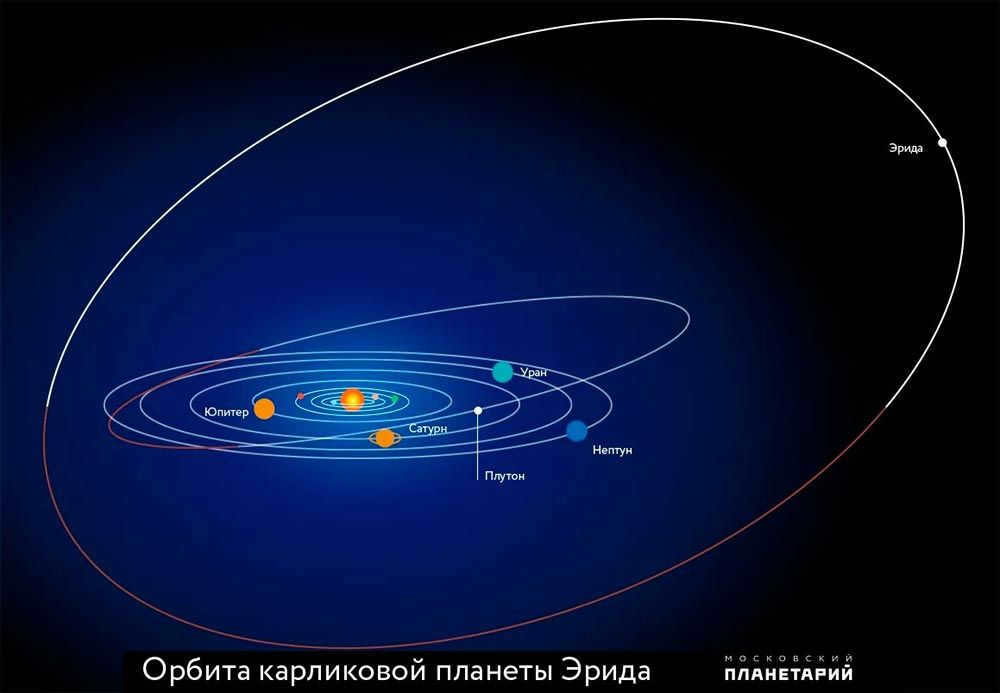

Observing Erida’s orbit from the “side” of the planet
Nevertheless, the surface temperature is not constant either and can vary between -243.2 and -217.2 °C, depending on the distance from the Sun. It’s remarkable that even though Erida is approximately three times farther away from the Sun compared to Pluto, its surface still receives a slightly higher amount of heat during perihelion.
The detection of methane ice bands in the spectra suggests that Erida’s surface is likely to be very similar to that of Pluto and Neptune’s largest moon Triton. While both Pluto and Triton exhibit a reddish surface color, Erida appears to be predominantly white. The presence of methane, which is highly volatile, on the surface implies that Erida has always resided in the outer regions of the solar system where temperatures are cold enough to maintain methane ice in its pristine state.
Alternatively, there is the possibility that methane is continuously being replenished by internal reservoirs within the dwarf planet, such as the activity of organisms on the surface… However, considering the extreme subzero temperatures, even the most imaginative writer would not dare to speculate about the existence of life on Erida.
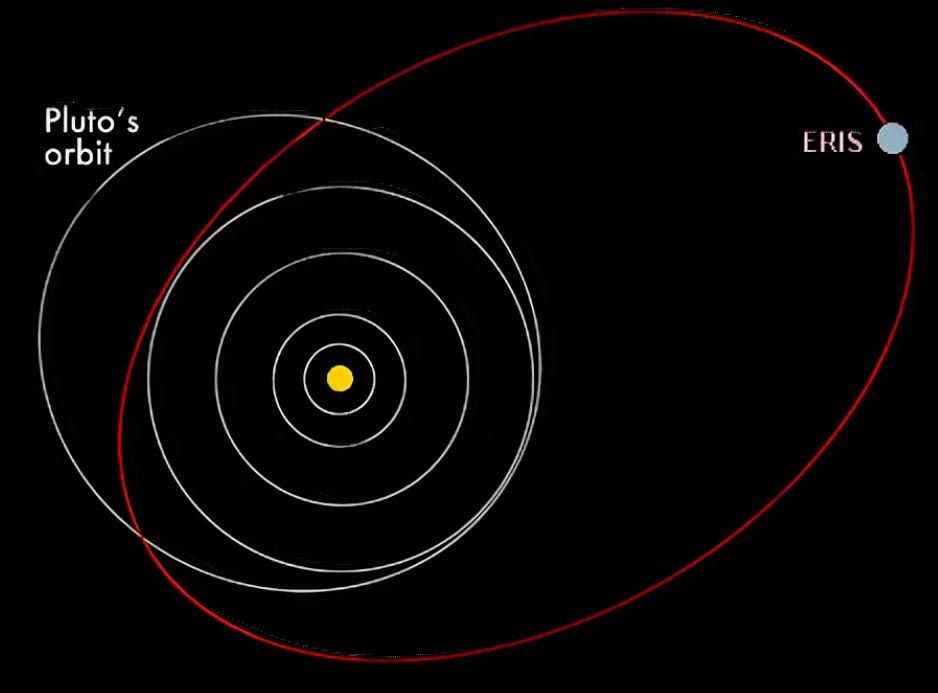

This is what Erid’s orbit looks like from an aerial viewpoint.
Dysnomia acts as a satellite for Erida.
Erida possesses a single satellite (initially discovered in 2005) which goes by the name of Dysnomia. Dysnomia was given this appellation as a tribute to the mythical goddess of injustice, who also happens to be Erida’s offspring. However, during Erida’s earlier days as Xena, the satellite was referred to as Gabrielle, taking inspiration from the warrior queen’s loyal companion and fellow fighter from the television series. Following the change in name to Erida, the satellite’s relation to her was not ceremoniously recognized either.
Dysnomia is the second largest moon of a dwarf planet (following Charon, which is a moon of Pluto). It is believed to have formed as a result of a collision between Erida and another celestial body, and it is composed primarily of ice. Despite this, spectral analysis reveals that Dysnomia has a very dark surface, which is in stark contrast to the “sparkling” appearance of Erida.
Dysnomia has an estimated diameter of approximately 700 km (+/- 100 km), an albedo of 0.04 +0.02/-0.01, and orbits at a distance ranging from 37 to 23,000 km from Erida. Its orbit is nearly circular, and it completes one revolution around its primary in a span of 16 days.
Despite being an extremely long-range and sizable object within our solar system, the Erida-Dysnomia pair does not currently have any plans for further exploration by the world’s leading space agencies through the use of automated space probes.
It has been estimated that a probe similar to the “New Horizons” spacecraft, utilizing a gravitational maneuver at Jupiter, could potentially reach Erida in approximately 24 years. However, due to the extensive duration and high cost associated with such a mission, scientists currently do not have the necessary objectives to pursue it. Nonetheless, considering the need for comprehensive research within the inner region of the Kuiper Belt, Erida may eventually serve as an “intermediate station” for future space missions. However, this outcome is unlikely to occur within the next several decades.
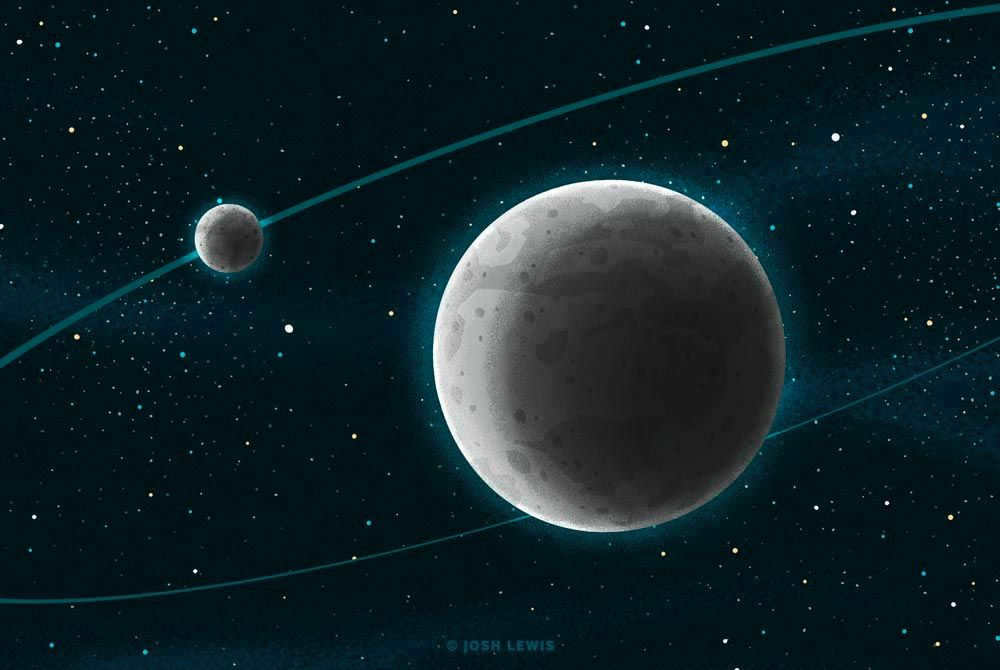

An artist has imagined the dwarf planet Erida and its moon Dysnomia, creating a captivating image.
Unraveling the Enigma of Erida
In 2007, Erida presented a puzzle to humanity, the resolution of which would be highly intriguing. The intriguing aspect is that on the surface of this enigmatic dwarf planet, there are processes occurring that defy scientific explanation. Recent data suggests that the surface of Erida is covered in a layer composed of a mixture of solid nitrogen and methane. In 2007, observations conducted at the Fred Lawrence Whipple Observatory in Arizona, using the 6.5-meter Multiple Mirror Telescope, revealed that as depth increases, the concentration of nitrogen should also increase. However, measurements taken two years prior with the 4.5-meter William Herschel Telescope, located in the Canary Islands, indicated a reverse situation: there was actually more nitrogen near the surface than in the interior.
These changes would have occurred naturally had Erida been in close proximity to the Sun during perihelion, where it is closest in its orbit. The Sun’s rays would have heated its surface and caused the frozen gases to vaporize, starting with the more volatile nitrogen. However, Erida is currently at a distance close to its maximum possible, approximately 100 astronomical units or 15 billion kilometers from the Sun, making such global events unlikely at present.
Another explanation could involve cryovolcanic processes, where large amounts of methane gas are released from beneath the surface. This phenomenon is similar to what was observed by the Voyager 2 spacecraft on Triton, a moon of Neptune. However, on Triton, the cryovolcanoes are fueled by the tidal forces exerted by a massive planet.
Key details about the dwarf planet Erida
- Erida was first observed in 2005 by a team of astronomers consisting of Michael Brown, Chadwick Trujillo, and David Rabinowitz.
- Erida is currently recognized as the most distant and massive among the five known dwarf planets. However, it ranks second in terms of size.
- Originally, Erida was named Xena, while its moon Dysnomia was known as Gabriel.
- The average distance between Erida and the Sun is approximately 68 astronomical units (a.u.), with a maximum distance of 97.7 a.u. and a minimum distance of 37.9 a.u.
- Erida has a stellar magnitude of 18.7, which means that it can be observed from Earth using a relatively powerful amateur telescope if you know where to look.
- Erida completes one orbit around the Sun every 558 years and rotates on its axis once every 25.9 hours.
- Erida’s orbit is unique compared to other celestial bodies in the solar system as it is elongated in the shape of an ellipse and inclined at an angle of 44 degrees.
- Erida has a radius of 1163 kilometers, which is approximately one-fifth the size of Earth’s radius. In comparison, our Moon has a radius of 1738 kilometers.
- Despite its weak gravity, Erida has the strongest gravitational force among all dwarf planets. This is not surprising considering that its mass is one-fourth that of Pluto. However, if you were on Erida, your weight would be reduced by a factor of 11 compared to Earth.
- The surface area of Erida is similar in size to Russia.
- While Erida currently lacks an atmosphere, it is expected that in approximately 200 years, as it approaches the Sun, the methane ice deposits on its surface will begin to thaw, resulting in the formation of a thin methane shell around the planet. Despite this, Erida still provides an incredible opportunity for stargazing!
- Despite being the most distant dwarf planet in our solar system, Erida actually comes closer to the Sun than Pluto does when it reaches its closest point in its orbit, known as perihelion.
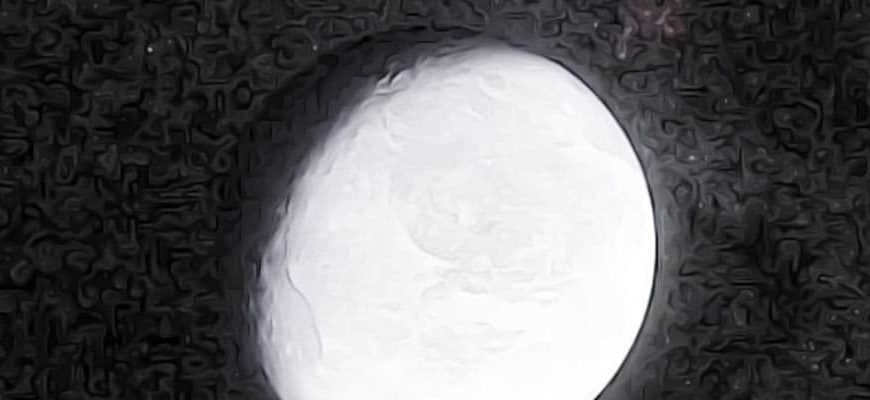
Located far beyond the orbit of Pluto, there exists an additional celestial entity. It is slightly smaller, colder, and denser than Pluto. Its name is Erida, and it is classified as a dwarf planet. In Greek mythology, Erida represents the goddess of discord and chaos, a fitting name for this space object. Erida was discovered by astronomer Mike Brown and his team from the California Institute of Technology in 2005. This discovery sparked a series of events that questioned Pluto’s planetary status. Here are ten established facts about this distant world.
If you were to become an astronaut, you wouldn’t find a 25.9-hour day on Eridus too extreme. Take Venus, for instance, where a day lasts almost 117 Earth days. However, a year on Erid is a bit longer than what we’re accustomed to. This dwarf planet completes one revolution around the Sun in 557 Earth years. Additionally, its orbit is not aligned with the orbits of the majority of other planets in our solar system. Erida’s orbit is tilted at an angle of 44 degrees with respect to the ecliptic plane.
2. Previously, it was believed that Erida was larger than Pluto
Following the discovery of Erida, the most accurate measurements available at that time indicated that it was slightly bigger than Pluto. It was estimated to have a radius of 1160 kilometers. However, after the New Horizons mission visited Pluto in 2015, Pluto regained its status as the ninth largest celestial object orbiting the Sun. It is now known with certainty that Pluto has a radius of 1,187 kilometers. For comparison, our Moon has a radius of 1737 kilometers. Ganymede, Callisto, Io, and Europa (Jupiter’s largest satellites), Titan (Saturn’s largest moon), and Triton (Neptune’s largest moon) are also larger than Pluto. On the other hand, Erida is 34% more dense than Pluto.
3- Erida has ignited a debate about the definition of a planet
When Erida was first discovered by Brown’s team, there was a lot of speculation about whether it should be classified as the tenth planet in our solar system or if it posed a challenge to the neat categorization of celestial objects. The discovery of Erida came after the discoveries of Sedna and Kvavar, both of which are located beyond the orbit of Neptune. This led astronomers to consider the possibility of numerous similar objects in the Kuiper Belt, and perhaps even more. It is impossible to determine how many Pluto-sized bodies may exist in this region.
The International Astronomical Union has ultimately established the criteria for classifying an object as a planet. According to their definition, a planet is a celestial body that has achieved hydrostatic equilibrium, meaning it is round in shape. Additionally, it must orbit around the Sun and have “cleared its orbit,” which implies that it has gravitationally dominated its orbital path. However, ongoing discussions persist regarding this matter.
4. Erida possesses its own satellite
Erida is accompanied by its very own moon, which goes by the name Dysnomia. Dysnomia completes one orbit around the dwarf planet every 16 days. According to Greek mythology, Dysnomia happens to be one of Erida’s daughters, and its name translates to “anarchy”.
5. Erida was initially known as Xena
Prior to being designated as Erida, the dwarf planet was referred to as 2003 UB313 (International Astronomical Union provisional designation). However, a group of astronomers had previously given it the name Xena, which pays tribute to the renowned Warrior Queen. “We have long desired to name an object with that name,” Brown revealed in an interview with The New York Times back in 2005, shortly after the discovery was made.
Spectroscopy is the primary method for analyzing the surface composition of celestial bodies. It enables the study of space objects by measuring the amount of light that reaches the instrument at different wavelengths. Many materials exhibit unique light absorption patterns at specific frequencies, resulting in less light being detected at those frequencies.
“According to Will Grandy, a planetary scientist at Lowell Observatory and a member of the New Horizons mission team, Erida displays highly pronounced absorption bands that correspond to methane ice. These bands are even stronger than those found on Pluto, where methane has been detected in significant quantities. Therefore, it is likely that methane will be even more prevalent on the surface of Erida.”
Erida is believed to have more significance than being a mere celestial body composed of ice. This is due to the rapid decomposition of methane in outer space, which results in the formation of darker and heavier hydrocarbons. According to Grandi, the fact that Erida’s surface is bright and covered in methane ice indicates that it undergoes frequent renewal. There are various possible mechanisms for this. One theory suggests that methane dissipates periodically into the atmosphere and then condenses back onto the surface, effectively altering the appearance of any dark matter present.
7. The nature of Eridas can be better understood through data obtained from Pluto
The information gathered from the New Horizons spacecraft’s exploration of Pluto has provided scientists with fresh perspectives on the phenomena that could be happening on Erid. “During the flyby near Pluto, we discovered a feature that had never been discussed before, not even in speculative discussions, called the Sputnik Planitia region. This distinctive region, shaped like a large, bright drop, is likely the result of an impact event. The volatile ice in this region is located in the deep lowlands, and it undergoes convective stirring akin to a boiling soup,” the researchers explain.
A similar process could potentially occur on Erid, implying that there could be significant activity happening on this minuscule planet despite its frigid temperatures and distance from the Sun.
8. Erid’s locality holds a wealth of scientific knowledge
In the field of comparative planetology, scientists utilize planets to gain insights into other planets. By examining Venus, which shares similarities with Earth in terms of size, mass, and basic composition, scientists can enhance their understanding of our own planet and its evolution. Similarly, objects in the vicinity of Erid can be scrutinized in a comparable manner.
“The Kuiper Belt, a region abundant in rocky and icy objects beyond Neptune’s orbit, presents an incredibly fertile ground for comparative planetology. Given the numerous minuscule planets present in that area,” Grandi explains, “it would be a lengthy endeavor to discover and explore them all.” The data obtained from New Horizons is aiding planetologists in developing models that unlock the mysteries of Erida.
9. Geologists also have a vast amount of research opportunities
"By extrapolating the surface area of objects larger than 100 kilometers, it becomes evident that the Kuiper belt possesses a geological surface area that surpasses that of all the planets in our solar system combined, including the Earth-group planets," Grandi elaborates. He further points out that this statement remains valid even if we were to include the Earth’s ocean floor. "For those enthusiastic about geology, particularly the intriguing field of cryogenic temperature geology, the Kuiper Belt offers unparalleled research prospects. Furthermore, there is an expansive expanse of land available for exploration and investigation."
10. A journey to Erid will require a significant amount of time
New Horizons, one of the most expeditious missions ever launched from our planet, successfully arrived at Pluto after a nine-year expedition. Currently, Erid is located three times farther away from the Sun compared to Pluto, although this distance may vary due to its highly elliptical orbit. Therefore, if this proposed mission is given the green light, it is important to understand that the ultimate outcome may not be revealed for quite some time.
“It would take several decades to reach this dwarf planet. Thus, in order to witness the fruition of such a mission, it is imperative to commence following its progress from a young age,” Grandi explains. One potential future mission could involve exploring the Kuiper belt as part of an overall expedition to Uranus or Neptune. Subsequently, the spacecraft would continue its journey into that particular region of space.
It will be quite a while before technological advancements allow for telescopes, whether on Earth, in space, or elsewhere, to capture images of Erida’s surface.
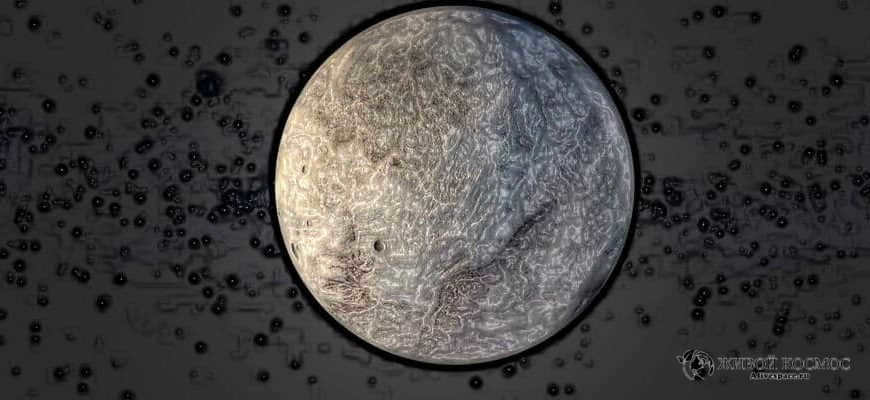
Those individuals who have resided on this planet for a significant period of time are aware that the solar system consists of precisely nine planets. These include Mercury, Venus, Earth, Mars, Jupiter, Saturn, Uranus, Neptune, and Pluto. This is how each of these individuals would respond if they were abruptly awakened at 04.15 in the morning with a flashlight shining directly in their face. Throughout their childhood and even adolescence, they were educated in this manner. However, the current generation of children find it amusing when their grandparents recount this information. This is because they are consistently taught, starting from kindergarten, that there are only eight planets in the solar system. They are also informed that Pluto is now classified as a dwarf planet, alongside Ceres, Haumea, Makemake, and Eridus. And nothing more.
How peculiar these names are. Indeed, they exist. However, they are not randomly chosen. The International Astronomical Union is responsible for naming them, following certain guidelines. Interestingly, all newly discovered celestial objects are named after mythological deities.
The golden apple of discord
One of the celestial bodies, Erida, bears a highly symbolic name that perfectly suits its nature. This object has a fascinating story behind it, as it was once worn by a Greek goddess who had a reputation for causing conflicts among the Olympian goddesses Hera, Athena, and Aphrodite. The goddess ingeniously provoked a dispute among the three by placing an apple inscribed with the words “the most beautiful” on a plate of fruit during a grand feast. Naturally, each goddess believed herself to be the most beautiful and the quarrel quickly escalated into a chaotic brawl, with chairs and sharp, barbed objects being hurled across the room. However, due to their immortality, the fight soon lost its intensity as the goddesses realized they could not inflict serious harm upon each other, despite the vulgar language and insults exchanged during the course of the skirmish.
There is no record of why exactly Erida initiated such chaos. However, some speculate that Erida was upset about not being invited to a significant event. Others believe that she simply wanted to tease the arrogant goddesses of Olympus. Women can be unpredictable like that, which is why they are intriguing. You never know what to expect. As illustrated in the mentioned incident, it ultimately resulted in the Trojan War. All because of an apple. On a plate.
However, the tale of Erida did not conclude at that point. In 2003, a trio of astronomers named Mike Brown, Chad Trujillo, and David Rabinowitz made a remarkable finding deep within the solar system. They stumbled upon a frigid and remote entity concealed within the vast expanse of space beyond the orbit of Pluto. Little did they know at the time that this celestial body would ignite a fierce debate among Earth’s astronomers!
Initial findings indicate that the recently discovered celestial body, designated temporarily as 2003 UB 313, is actually bigger than Pluto! As a result, the total count of recognized planets in our solar system has now reached ten! Nevertheless, this development has not been well-received by certain astronomers, particularly those who work with children. They argue that these planets located beyond Pluto’s orbit might be inconsequential, akin to worthless trinkets. Furthermore, they worry that keeping track of an expanding list of planets may become challenging for students in middle school.
Tensions within the scientific community increased, leading to a decision by the International Astronomical Union in August 2006 to alter the classification of the solar system. Following extensive deliberation, the members voted to remove Pluto from the list of recognized planets and instead place it in a newly established category known as “dwarf planets”. This designation was given to celestial bodies that possess sufficient mass to assume a spherical shape but lack the ability to clear their orbit of smaller objects.
Consequently, object 2003 UB 313, now known as Erida, found its rightful place within this redefined classification. The name Erida, which was chosen after careful consideration, holds great significance as it represents the goddess of discord.
Who are you?
Investigating Erida has posed a significant obstacle for the scientific community. This dwarf planet is situated even farther from Earth than Pluto, which reaches a maximum distance of 49 astronomical units (a.u.) from the Sun. In contrast, Erida is positioned at a much greater distance of 97 a.u.
Studying a celestial body like Erida, which resides at such an immense distance, presents a formidable challenge for contemporary science. One approach to tackle this is by examining the sunlight that reaches us from Erida, as it serves as the primary source of reflected light.
Surprisingly, Erida conceals a multitude of astonishing secrets. The celestial object takes a staggering 557 years to complete a full revolution around the sun. However, what sets Erida apart is its highly elliptical orbit. As a result, there are instances when Eridas ventures closer to the Sun than even Pluto. On the other hand, it can also be found twice as far away, residing in the frigid outskirts of our solar system.
During these periods, the dwarf planet’s tenuous methane atmosphere undergoes freezing, enveloping its surface in a delicate layer of white ice that remarkably reflects sunlight.
Twin Siblings
In the year 2010, Erida made a passage in front of the star and momentarily cast a shadow over it. This occurrence provided astronomers with a better opportunity to precisely measure the dimensions of the small planet. Consequently, we now understand that Pluto and Erid are practically indistinguishable. Recent measurements of Pluto’s dimensions, thanks to the data obtained from the New Horizons spacecraft, suggest that the object possesses a radius of 1,185 kilometers. On the other hand, Erida’s estimated radius is approximately 1163 kilometers.
Erida, alongside Pluto, Ceres, Haumea, and Makemake, currently holds the official recognition as a dwarf planet by the International Astronomical Union. Nevertheless, the roster of potential candidates for dwarf planet status is expanding. For instance, Kvavar, Sedna, Ork, Salacia, and various others. Some astronomers hypothesize that there could potentially be thousands of such celestial bodies, yet to be discovered.
Wow. Olympus didn’t have a sufficient number of gods to give them all a name!
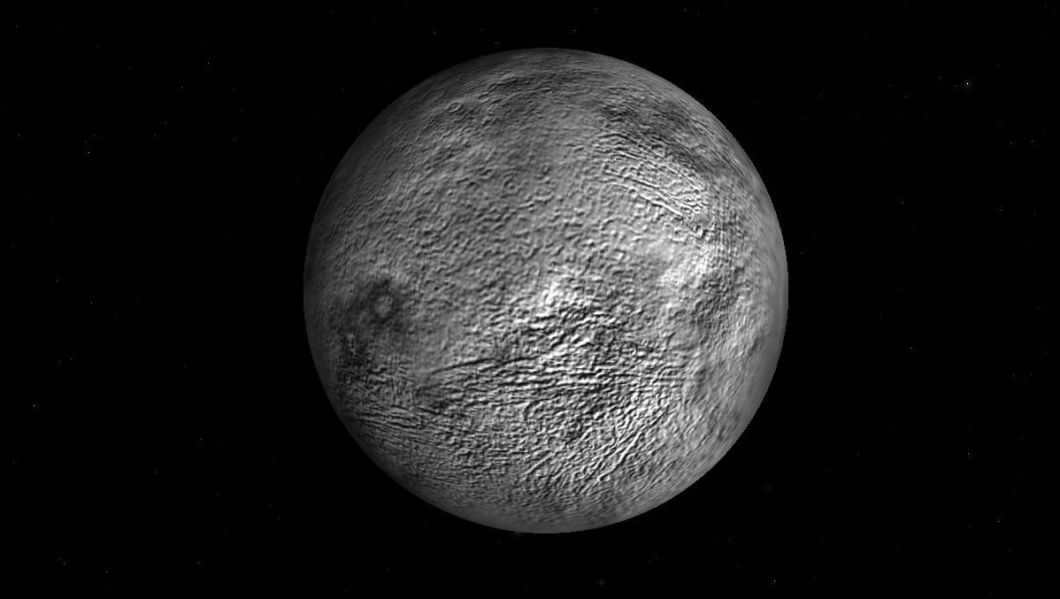
Erida, found in the early 21st century, is among the 100,000 planets that have been discovered. It holds the distinction of being the largest object discovered in the solar system since Neptune was first detected in 1846.
Discovery’s Background
A team of American scientists, including Michael Brown from the California Institute of Technology, David Rabinowitz from Yale University, and Chadwick Trujillo from the Gemini Observatory, unearthed Erida.
These scientists dedicated several years to exploring trans-Neptunian objects, becoming renowned for their identification of two significant celestial bodies: (50000) Kvavar, one of the most massive objects in the Kuiper belt, and (90377) Sedna, one of the most remote objects known in the solar system.
A new planet was initially observed by astronomers on January 5, 2005 at 19:20 UTC. The observation was made during a reanalysis of an image captured on October 21, 2003 at 6:25 UTC using the Samuel Oschin Telescope. Prior to this, Erida was also identified in multiple earlier images.
Just a few days after the initial sighting, Brown’s research team, in collaboration with Suzanne Turrellott, successfully spotted the object again using the 1.3-meter SMARTS telescope at the Cerro Tololo Observatory.
It took several additional months of study to determine the object’s orbital parameters and approximate size.
The official announcement regarding the discovery was published on July 29, 2005.
The object was given the temporary designation 2003 UB313 during the registration process. The decision on whether to classify it as a small or full planet was uncertain, so the naming proposal was delayed until the meeting on August 24, 2006.
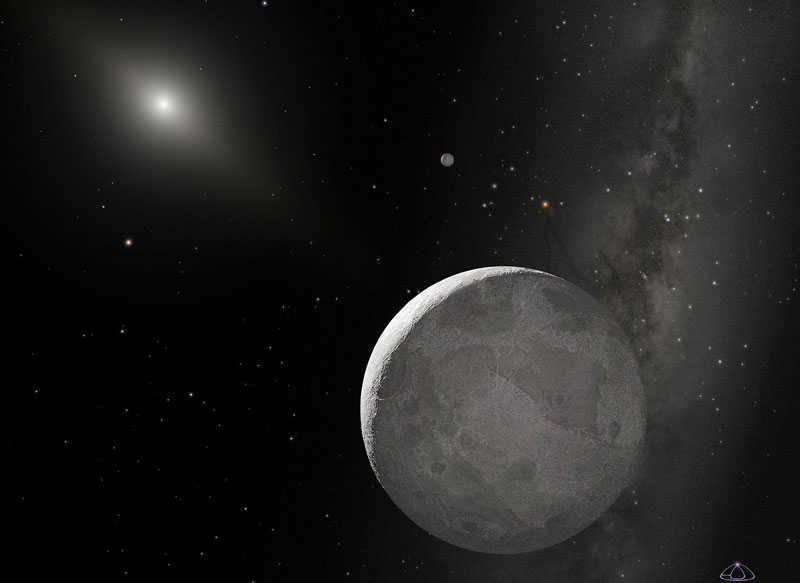
However, during this time, the media and the astronomical community popularized the name Xena (English Xena). This name was given in tribute to the protagonist of the television series Xena the Warrior Queen and was an unofficial designation chosen by a group of discoverers for the first object larger than Pluto.
According to Michael Brown, one of the discoverers of the planet:
“We selected it because it begins with the letter ‘X’ (Planet X), it has a mythical sound (okay, it’s TV mythology, but Pluto is named after a cartoon character, right?), and (it’s true) we wanted to include more female deities (like Sedna). Additionally, that show was still airing, which demonstrates how long we have been searching for this object!”
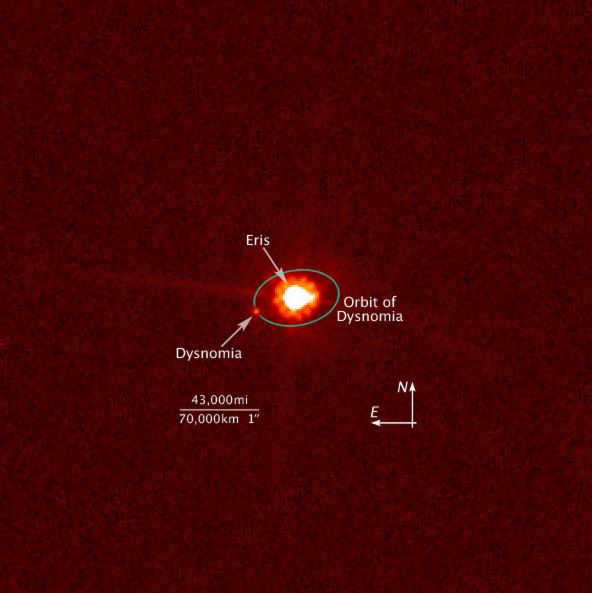
G. Schilling published an article stating that Michael Brown initially wanted to name the dwarf planet Lila, after a concept in Hinduism that also happened to be the name of the astronomer’s newborn daughter, Lilah.
There were rumors in the Russian media that the proposed name for the planet was Imir, inspired by a giant from Scandinavian mythology.
Michael Brown himself publicly suggested that the most suitable names for 2003 UB313 could be Proserpina, the wife of Pluto in Roman mythology, or its Greek counterpart, Persephone.
These names received the highest number of votes in a competition held by New Scientist magazine to choose a name for the tenth planet.
However, none of the suggested names were approved, as at that time the asteroids (26) Proserpina and (399) Persephone had already been named. According to the rules set by the International Astronomical Union (IAU), the names of minor planets should not be too similar to avoid any naming conflicts.
The name Erida, which refers to the Greek goddess of discord and happened to be Brown’s favorite goddess, was not initially chosen. On September 6, 2006, this name was submitted to the IAU commission and was ultimately approved on September 13, 2006. Subsequently, on September 7, Erida was officially included in the catalog of minor planets with the designation 136199, similar to how Pluto was categorized.

Until the XXVI Assembly of the International Astronomical Union, Erida claimed to be the tenth planet of the Solar System for nearly a year and a half. However, on August 24, 2006, the International Astronomical Union approved the definition of a classical planet, which Erida, similar to Pluto, does not meet.
Therefore, while the status of Pluto as a planet has long been debated due to the discovery of other trans-Neptunian objects, it was the discovery of Erida that sparked the process of reevaluating it rather than recognizing the dwarf planet as a planet.
For a long time, Erida has been regarded as significantly bigger than Pluto; up until 2010, their sizes were considered so similar that it was challenging to definitively determine which of these entities was larger. Nevertheless, based on data collected by AMS New Horizons in July 2015, it has been established that Pluto is indeed larger than Erida and is in fact the largest among the trans-Neptunian objects.
Location of the planet
The path of Erida’s orbit has been traced back to 1954 using archival images. However, due to its slow motion, it is difficult to determine the exact orbital characteristics with high precision.
Given the vast length of the orbit, it is not possible to observe it in its entirety, as the planet’s trajectory began a long time ago.
Erida’s orbit is remarkably elongated, with its maximum distance from the Sun being 97.61 astronomical units (14.6023 billion km), and its minimum distance being 37.808 astronomical units (5.65598 billion km).
It takes Erida approximately 557 years to complete one orbit around the Sun, and its orbit is inclined at an angle of 44.177 degrees to the ecliptic plane.
Distinctive qualities of Erida
The Spitzer infrared telescope conducted measurements of Erida’s dimensions in 2007, determining its diameter to be approximately 3,000 km. The most precise measurements were obtained on November 6, 2010, providing evidence that Erida is of lesser size compared to Pluto.
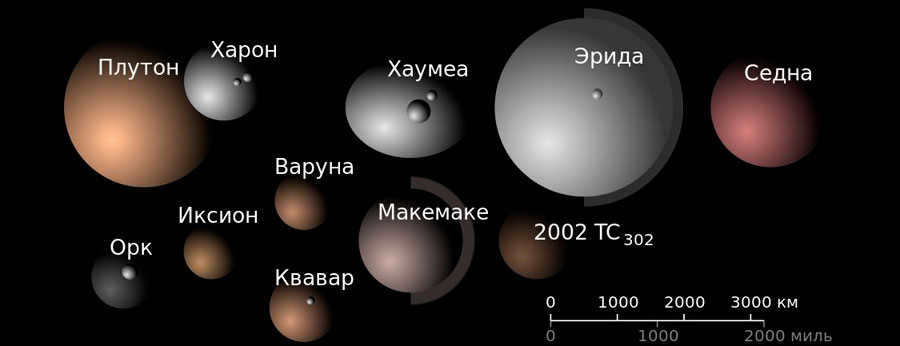
However, measurements conducted in 2007 for Pluto suggest that its diameter is 2322 km, leaving the question of which dwarf planet is the largest in the Solar System unanswered.
Erida possesses an absolute stellar magnitude of -1.19m. The planet’s mass is determined based on the existence of a companion, which is approximately 1/4 greater than Pluto’s mass, totaling 1.66×10²²² kg. Consequently, Erida’s average density closely resembles that of Pluto, amounting to 2.52 g/cm3. This density is typical for objects in the Kuiper Belt and suggests a prevalence of rock over ice.
Back in February 2006, the journal Nature published a report on the measurement of heat release from the planetoid. This measurement led to the determination of its diameter, which was found to be approximately 3000±300 km.
In 2007, NASA conducted its own measurements using the Spitzer infrared telescope. The estimated diameter of Erida based on these measurements was found to be 2600+400-200 km.
However, the most precise measurement to date took place on the night of November 6, 2010. Three groups of astronomers in Chile observed Erida as it passed in front of the faint star USNO-A2 0825-00375767 (with an apparent magnitude of 17.1m) in the constellation of Kita. This observation allowed them to determine the diameter of the plutoid with an incredible accuracy of 12 km.

